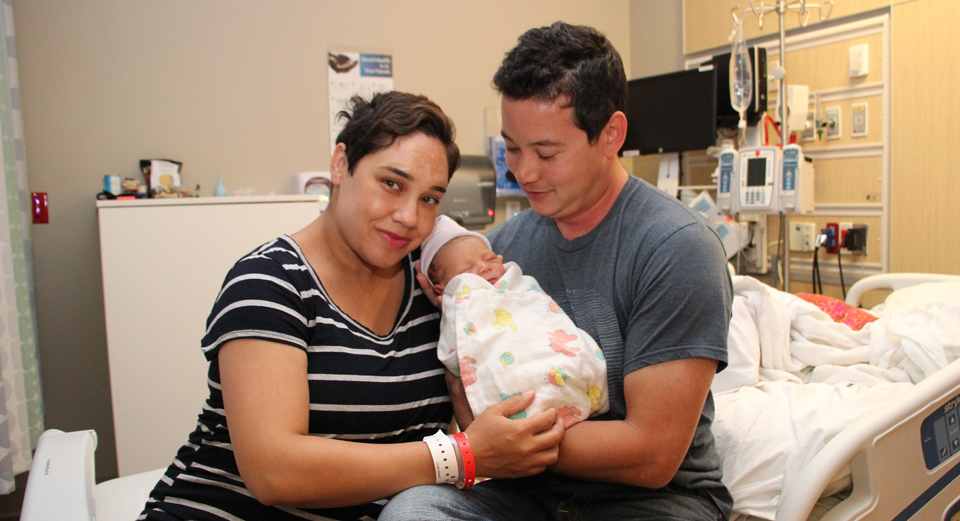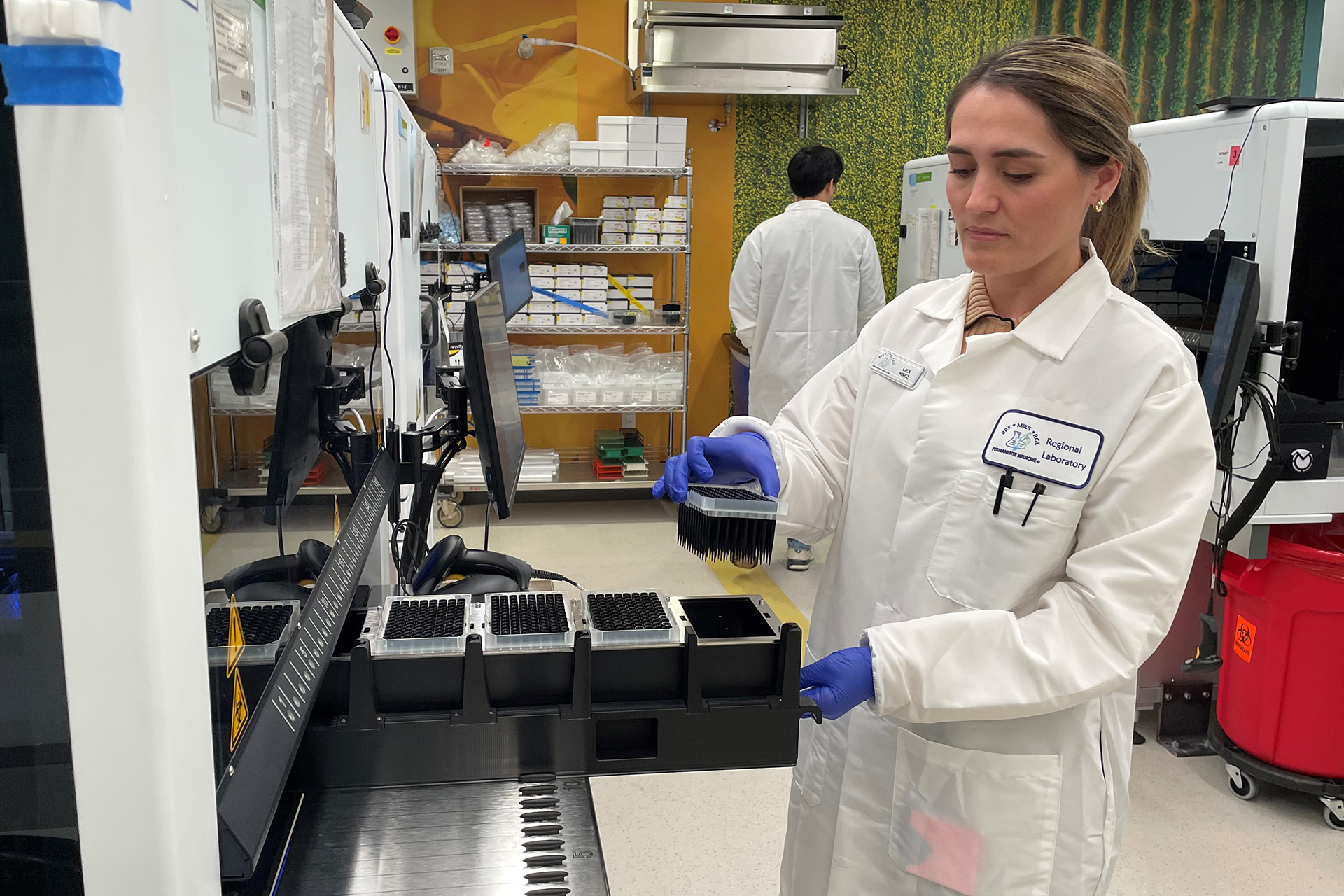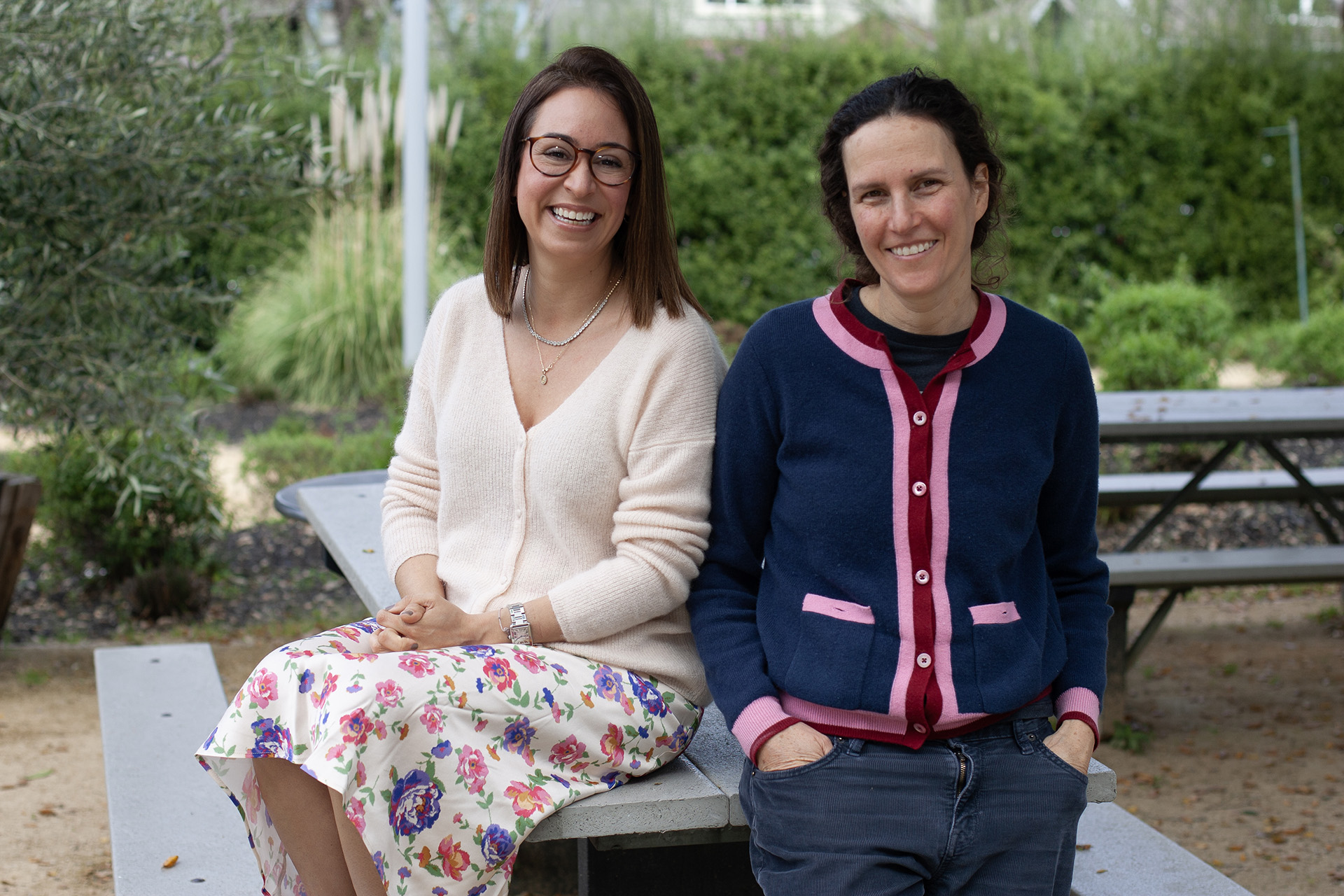The latest data shows Kaiser Permanente Northern California has a C-section rate of 22 percent for low-risk mothers compared to a rate of 27 percent nationwide. Pictured above, Christina and Sid with their newborn son, Tyler.
The day after their son Tyler was born last month, Christina and Sid were relaxing in their room at the Kaiser Permanente Oakland Medical Center, basking in the glow of their new family.
The couple (who asked that we not use their last names) seemed particularly relieved that their son’s delivery went well because for a time it looked like Christina might need to deliver Tyler by emergency caesarean section.
Baby Tyler’s heart rate had been dropping after Christina’s contractions, so her caregivers prepped her for the possible surgery. But after she was moved to the operating room, Christina said that the baby’s heart rate stabilized and her doctor explained that it would be better for both her and Tyler if she delivered vaginally.
“They said, ‘We’re going to have you push, but if he doesn’t come out after a few rounds of pushing, we might still have to do the C-section,’” Christina said. “They gave me plenty of instruction, and I pushed three times, each time counting to 10. And out he popped.”
“The care was great and we’re pretty happy,” Sid said. “We know a lot of people with children who ended up getting emergency C-sections, and it sounds like there’s a long recovery time.”
Right Care, Right Time, Right Reason
Baby Tyler’s birth is one story of how Kaiser Permanente Northern California works to reduce unnecessary C-sections — while making sure that patients who need them get them.
While C-sections are considered safe and in some situations life-saving, they carry additional risks compared with a vaginal birth. The benefits of a vaginal birth for women include shorter hospital stays, lower infection rates, and quicker recoveries. Babies born vaginally have a lower risk of respiratory problems.
Hospitals publicly report their C-section rate for women who are considered low risk (first-time moms with a single baby who is head-down at term). According to The Joint Commission, in 2014, the rate of C-sections for low-risk moms nationwide was 26.7 percent. The latest data from Kaiser Permanente Northern California is almost 5 percentage points lower at 22 percent.
Moreover, the rate for women successfully delivering a baby vaginally after delivering a previous baby by C-section is 10 percent nationwide, while Kaiser Permanente Northern California’s rate is 23 percent.
“Our numbers are the result of our care delivery team,” explained Tracy Flanagan, MD, director of Women’s Health. “Our hospital labor and delivery units are staffed 24 hours a day, 7 days a week with doctors, and there are certified nurse midwives in 13 of 15 of those units. We all practice evidence-based maternity care to promote vaginal birth. We provide the right care at the right time for the right reason.”
Managing Labor with Patience
Kaiser Permanente Northern California also minimizes admissions of women in early labor, and doesn’t induce labor before 39 weeks without a medical reason. And throughout the organization’s 15 labor and delivery units, the majority of low-risk births are delivered by certified nurse midwives.
Kaiser Permanente Oakland Physician Maternity Director Amanda Calhoun, MD, said patients want less intervention and research shows midwives help that happen.
“There’s great evidence in the medical literature that having midwives helps decrease the low-risk C-section rate,” she said. “In the vast majority of cases, vaginal births are safer.”
Dr. Calhoun described Kaiser Permanente maternity teams as having a “shared culture of patience,” waiting longer for a woman’s natural physiology to kick into the more active phase of labor and allowing women to push for longer — as long as it’s safe for mom and baby.
“If the mothers are making little bits of progress, and mom and baby are healthy, we make sure women have the full opportunity to have their labor take place. We don’t rush them through.”





This Post Has One Comment
Kudos to all our wonderful KP labor and delivery teams for their hard work!